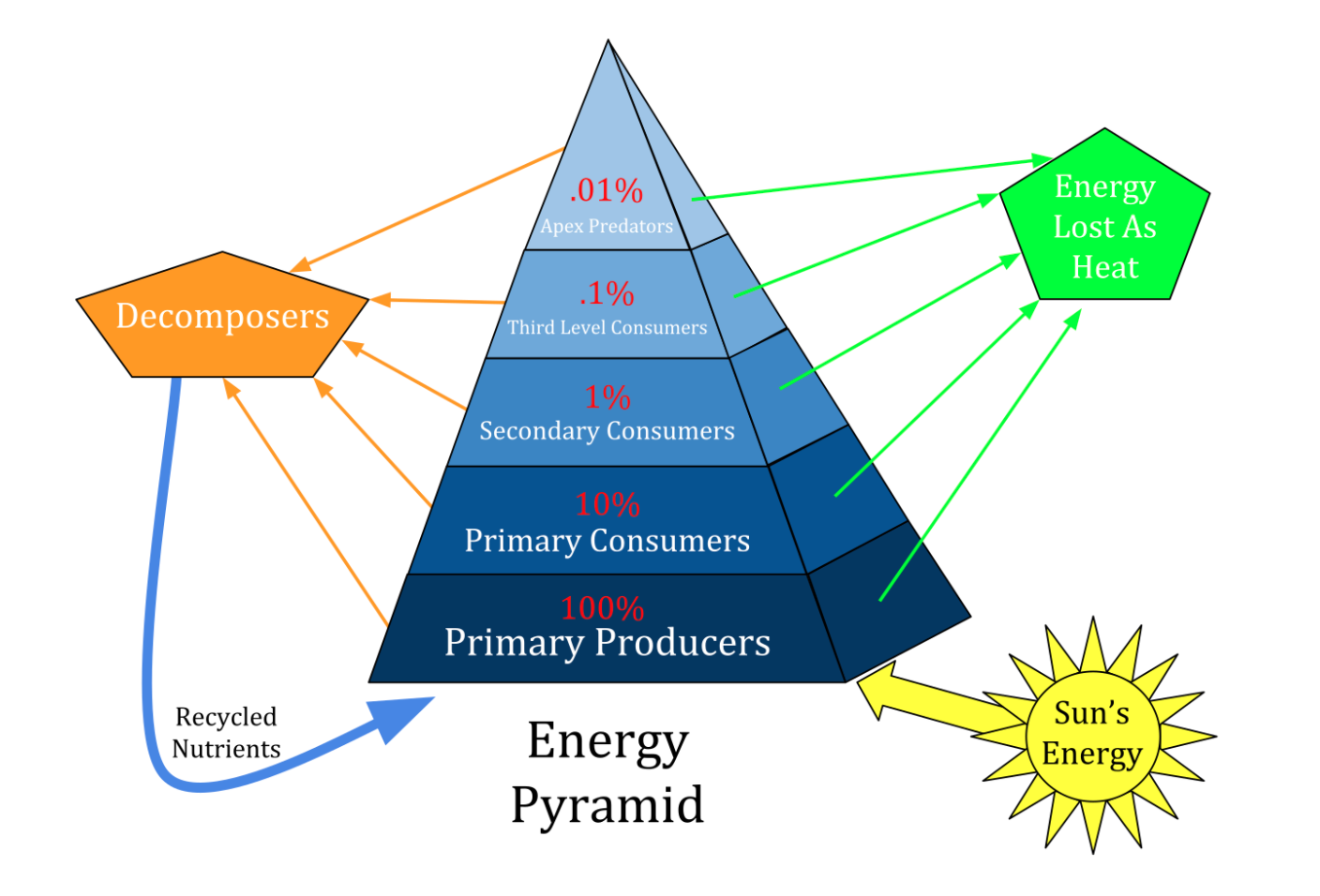Browse By Unit
Unit 1 Overview: The Living World: Ecosystems
2 min read•june 18, 2024
Jenni MacLean
Jenni MacLean
Unit 1 is a foundational unit for Environmental Science because it's going to look at how all of the processes on Earth work. The "building blocks" of the course, so to speak; before we can jump into the fun stuff like climate change, we have to understand the fundamentals of the carbon cycle, for example. Per College Board, the class covers "a wide range of topics, including Earth systems and resources, the living world, population, and land and water use. It also covers environmental issues and the relationship between science and society."
Biomes
When you think of biomes, they come in two major categories: terrestrial and aquatic. Biomes are categorized by the climate (temperature and precipitation) and the biomass (plants and animals) living in them. Due to Earth's tilt, the sun's distribution of energy varies, and this difference is what allows scientists to classify certain regions as biomes. For the major biomes, we classify them based on factors such as yearly rainfall and temperature. AP Environmental Science emphasizes key terms such as environmental conditions, biodiversity, climate change, and conservation throughout this unit.
Cycles
Every biome relies on natural cycles to move matter from one form to another. The rate and intensity of these processes can help in biome classification. The major cycles we are going to study are the carbon, nitrogen, phosphorus, and hydrologic cycles. Since Earth is a closed system, one which recycles matter rather than losing it, these cycles are essential to understanding our planet. Here are the major topics pertaining to each cycle:
Carbon Cycle: Climate Change
Nitrogen and Phosphorus Cycles: Large Scale Farming, Growth and Development
Water Cycle: Clean Water Access, Water Pollution
Ecosystem Interactions
Ecosystems build food chains and require constant interactivity with other species and surrounding environments. Since resources are limited, adaptation and evolution are required to sustain oneself and survive.
Species Interactions
Mutualism: 😀-😀
Commensalism: 😀-😐
Parasitism: 😀-😟
Predator and Prey: 😀-😟
Trophic levels
In any ecosystem, we can follow the flow of energy from one trophic level to another. Like a tier chart, trophic levels show distribution of consumption similar to a food chain and this corresponding energy output. As a rule, it takes a lot more energy to create an organism in a 3rd or 4th trophic level than something at the bottom. Here is a diagram to help us better visualize the movement of energy.

In conclusion, Unit One examines the elementary of Earth's functions and how these simple concepts help the planet's natural functions occur properly.
<< Hide Menu
Unit 1 Overview: The Living World: Ecosystems
2 min read•june 18, 2024
Jenni MacLean
Jenni MacLean
Unit 1 is a foundational unit for Environmental Science because it's going to look at how all of the processes on Earth work. The "building blocks" of the course, so to speak; before we can jump into the fun stuff like climate change, we have to understand the fundamentals of the carbon cycle, for example. Per College Board, the class covers "a wide range of topics, including Earth systems and resources, the living world, population, and land and water use. It also covers environmental issues and the relationship between science and society."
Biomes
When you think of biomes, they come in two major categories: terrestrial and aquatic. Biomes are categorized by the climate (temperature and precipitation) and the biomass (plants and animals) living in them. Due to Earth's tilt, the sun's distribution of energy varies, and this difference is what allows scientists to classify certain regions as biomes. For the major biomes, we classify them based on factors such as yearly rainfall and temperature. AP Environmental Science emphasizes key terms such as environmental conditions, biodiversity, climate change, and conservation throughout this unit.
Cycles
Every biome relies on natural cycles to move matter from one form to another. The rate and intensity of these processes can help in biome classification. The major cycles we are going to study are the carbon, nitrogen, phosphorus, and hydrologic cycles. Since Earth is a closed system, one which recycles matter rather than losing it, these cycles are essential to understanding our planet. Here are the major topics pertaining to each cycle:
Carbon Cycle: Climate Change
Nitrogen and Phosphorus Cycles: Large Scale Farming, Growth and Development
Water Cycle: Clean Water Access, Water Pollution
Ecosystem Interactions
Ecosystems build food chains and require constant interactivity with other species and surrounding environments. Since resources are limited, adaptation and evolution are required to sustain oneself and survive.
Species Interactions
Mutualism: 😀-😀
Commensalism: 😀-😐
Parasitism: 😀-😟
Predator and Prey: 😀-😟
Trophic levels
In any ecosystem, we can follow the flow of energy from one trophic level to another. Like a tier chart, trophic levels show distribution of consumption similar to a food chain and this corresponding energy output. As a rule, it takes a lot more energy to create an organism in a 3rd or 4th trophic level than something at the bottom. Here is a diagram to help us better visualize the movement of energy.

In conclusion, Unit One examines the elementary of Earth's functions and how these simple concepts help the planet's natural functions occur properly.

© 2025 Fiveable Inc. All rights reserved.